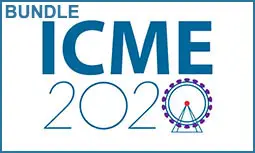TAO: A Trilateral Awareness Operation for Human Parsing
Enbo Huang, Zhuo Su, Fan Zhou
-
Members: FreeSPS
IEEE Members: $11.00
Non-members: $15.00Length: 15:02
09 Jul 2020
Human parsing, which segments a human image into semantic regions, is a fundamental task in human-centric analysis. Recently, numerous human parsing approaches based on convolutional neural networks (CNNs) have made significant
progress. However, these models still suffer the high timecomplexity and poor efficiency issues, since they always introduce too many and complex hypothetical priors. Therefore, in this paper, we attempt to solve above issues by mining the deep information hidden in data, such as the scale, spatial information and statistics of the image descriptors, etc. By this way, we propose an effective structure, named the trilateral awareness operation (TAO), which can boost the scale, spatial and fine-grained awareness of a CNN. In practice, it is a simple yet effective architecture without using bells and whistles (such as human pose and edge information), to address human parsing tasks. Comprehensive experiments and corresponding results on three public datasets have demonstrated that the proposed TAO is superior to the state-of-theart methods.
progress. However, these models still suffer the high timecomplexity and poor efficiency issues, since they always introduce too many and complex hypothetical priors. Therefore, in this paper, we attempt to solve above issues by mining the deep information hidden in data, such as the scale, spatial information and statistics of the image descriptors, etc. By this way, we propose an effective structure, named the trilateral awareness operation (TAO), which can boost the scale, spatial and fine-grained awareness of a CNN. In practice, it is a simple yet effective architecture without using bells and whistles (such as human pose and edge information), to address human parsing tasks. Comprehensive experiments and corresponding results on three public datasets have demonstrated that the proposed TAO is superior to the state-of-theart methods.



